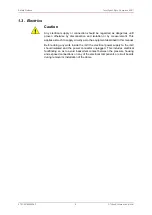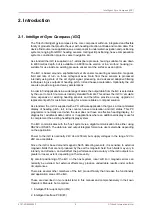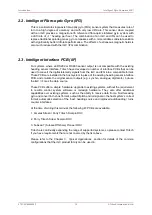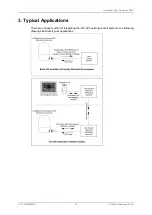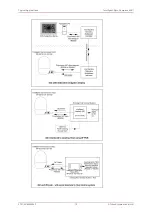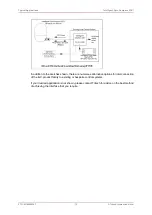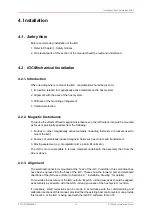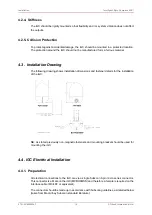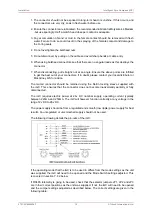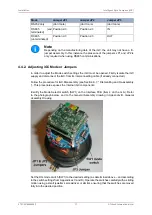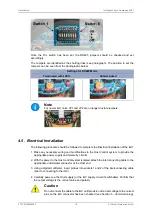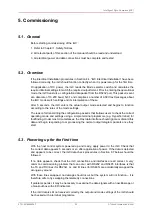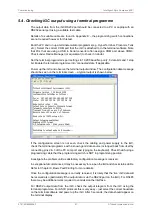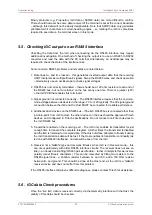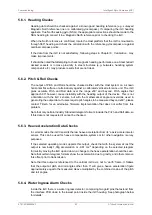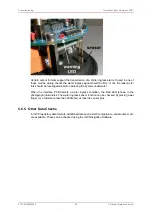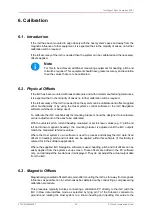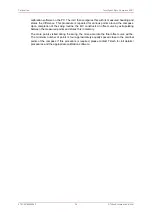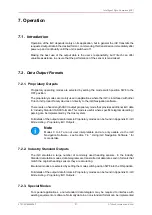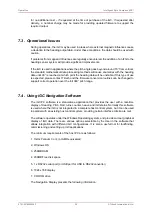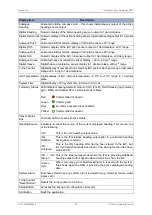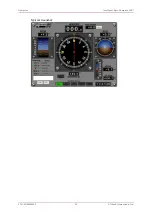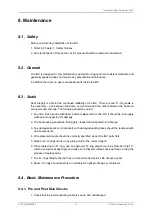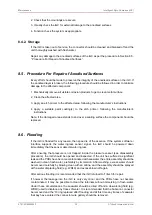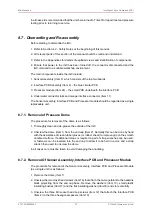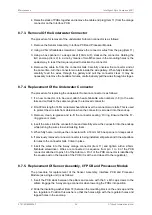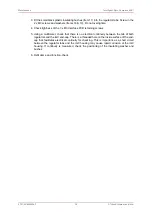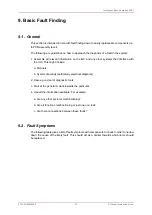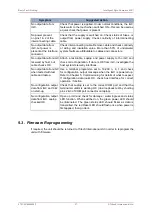
Commissioning
Intelligent Gyro Compass (iGC)
0707-SOM-00004-7
22
© Tritech International Ltd.
Binary protocols (e.g. Proprietary iGC data or SKR80 data) are more difficult to confirm.
There should however be some data received if the terminal is set at the correct baud-rate
– although this data will not be easily decipherable. Note that SKR80 data only generates
printable ASCII characters at certain heading angles – so rotating the iGC is sometimes
required to see data on the terminal screen in this mode.
5.5. Checking iGC output on an RS485 interface
Checking the data from the iGC when connecting via the RS485 interface may require
additional investigation. One method of checking the output is to use an RS485 to RS232
converter and read the data with the PC terminal. Alternatively, an oscilloscope may be
required to check the state of the interface lines.
Some common RS485 problems and remedies are noted below:
1. Data lines A+ and B- crossed – this generates inverted output data that the receiving
UART interprets as multiple ‘Break’ signals. Swap the RS485 wires and check operation
– alternatively use an oscilloscope to check signal voltages
2. RS485 bus not correctly terminated – there should be a 120 ohm resistor at each end of
the RS485 bus, but no more than 2 on the bus at any one time. There is a jumper (JP3)
o the iGC PCB that enables this terminator
3. Signal ground not connected correctly – The RS485 interface requires that the common-
mode voltage between devices is in the range –7V to +12V typically. The 0V signal ground
connection between the iGC and the Host MUST be connected for reliable performance
4. Additional ‘alien’ devices on the RS485 bus – if the iGC RS485 bus is connected other than
‘point-to-point’ from iGC to Host, the other devices on the bus should be approved Tritech
devices, and configured to Tritech specifications. Do not connect non-Tritech devices to
the iGC RS485 bus
5. Transmitter enabled on the receiving port – The iGC only enables its transmitter for just
enough time to transmit the complete telegram. At other times the transmitter is disabled
and the iGC is listening for received data. If the Host interface attempts to transmit during
the iGC transmissions data will be lost. If the Host enables its transmitter continually (as
is done with RS422 interfaces), no data will be seen from the iGC
6. Receiver not a ‘failsafe’ type and receives ‘Breaks’ when iGC is in Receive mode – this
can occur particularly with older RS485 interface circuits. The receiver does not see an
idle (i.e. nobody transmitting) RS485 pair as idle data – rather it interprets this as inverse
polarity (serial ‘Break’ characters). This can be remedied by fitting two resistors to the
RS485 signal lines – a 330ohm resistor between A+ and +5V, and a 180 Ohm resistor
between B- and ground. This should be done at the Host end, as the iGC is a ‘failsafe’
receiver device and does not suffer from this problem.
If the RS485 interface still proves difficult to diagnose, please contact Tritech for assistance.
5.6. iGC data Check procedures
Once the ‘live’ iGC data is received correctly via the telemetry interface with the Host, the
validity of this data should be checked.

